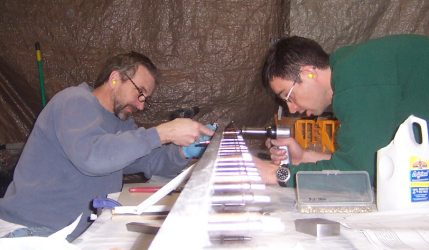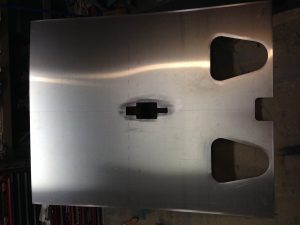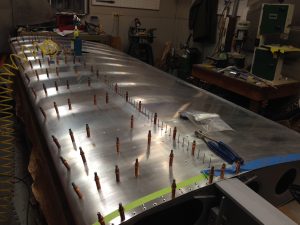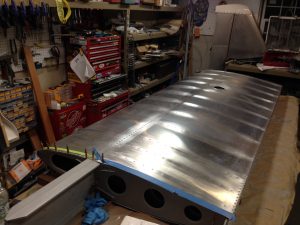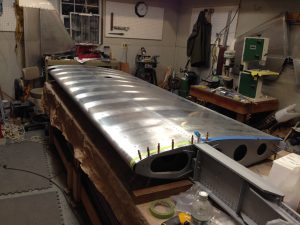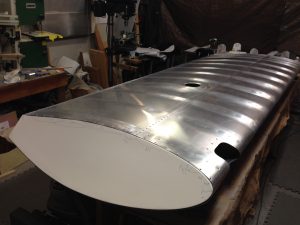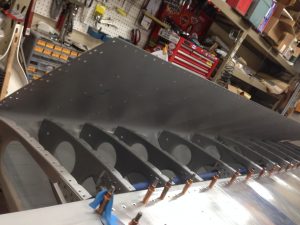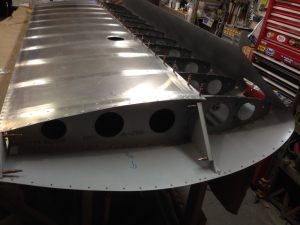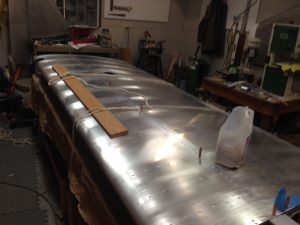February 23, 2014
Turtle Deck Cut Out & Seat Sling
The turtle deck sections were marked and cut without incident last week. The only issue I had at all was that the power went out do to a massively wet and heavy snow storm on Thursday night. The total snowfall was only 12 or 14 inches but it started as a rain and snow mix and by the time the air cooled and the snow really began to accumulate the trees and power lines were loaded with ice and snow.
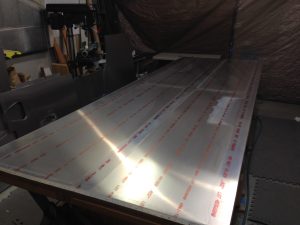
The plans do not mention it but I am planning on match drilling the seam at the top of the turtle deck with the two sections laid flat to insure the holes line up. It seems obvious as I write this but the plans show two halves being drilled as separate pieces and only later laid flat to be riveted with the seam channel. The two sections I am referring to are F20-06 (R and L) and the seam channel is F20-07.
After the turtle deck sections the next largest uncut fuse piece was the cockpit floor, F16-01. This was to be cut from 0.032″ but there were two more pieces needed at 0.025″, the aft bottom skin (that needed to wait until we picked up one more sheet) and then the seat sling. We were planning on installing the sport trainer controls (center brake, flaps, throttle, etc.) and the lowered seat option. Together these two options required we follow C06 through C09.
There a bunch of changes and substitutions related to these four sheets and it is best to carefully read and then review the implications of the sheets. Tim and I are slowly getting up to speed with these sheets and I’m sure by the time we’re done it will seem very straight forward but for now it is often confusing.
I finished the modified seat sling cut out tonight. I then moved the last full 4’x12′ sheet of 0.032″ sheet aluminum to the table to be cut into the lower side panels, F13-01, lower cockpit skin, F16-01, glare shield and control panel. We need to be sure we have a large enough piece for the control panel to add a few inches to the bottom as others builders have done for a little more instrument room.

